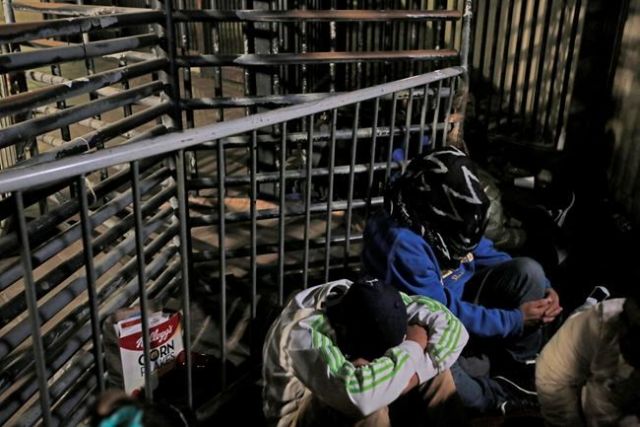The asylum claims of six Hondurans were accepted for processing Tuesday, ending a 17-hour standoff involving U.S. authorities, the migrants and two U.S. lawmakers supporting them on a tiny piece of American soil at the country’s border with Mexico.
The Hondurans had camped out in an area of San Diego’s Otay Mesa border crossing past where pedestrians pass a wall plaque delineating the international boundary but before they reach inspectors. They were joined by U.S. Reps. Nanette Barragan and Jimmy Gomez, both California Democrats.
“They’re on U.S. soil, and they’re basically being blocked for presenting themselves for asylum,” Barragan said in a video posted on Twitter that she said was taken around 2:40 a.m.
The asylum seekers arrived at the crossing Monday afternoon, and after several hours U.S. inspectors agreed to process claims of eight unaccompanied children and a mother and her five children, attorneys said. Six more were initially not allowed into the country and sat on blankets throughout a chilly night before authorities agreed Tuesday to process their claims.
“Children are sick, they’re crying, they’ve had to use the bathroom,” Nicole Ramos, an attorney at Al Otro Lado, a legal services organization working on behalf of the migrants, said Monday night. “We’ve had to get blankets and food for them.”
Customs and Border Protection did not comment on the status of the Honduran asylum seekers, but officials said claims are processed as quickly as possible.
The impasse highlighted a U.S. practice to limit entry for asylum seekers at official crossings when they are at full capacity, which it calls “metering” or “queue management.” Authorities emphatically deny they are turning away asylum seekers — something that is prohibited under U.S. and international law — and say they are simply asking them to temporarily wait in Mexico.
CBP says a surge in asylum claims has strained resources. The number of people expressing fear of returning to their home countries — the initial step toward asylum — jumped 67 per cent at Mexico border in the fiscal year that ended Sept. 30, rising to 92,959 claims from 55,584 the previous year.
Critics contend that CBP is limiting the number of asylum claims to deter people from coming.
In San Diego, U.S. authorities funnel asylum claims through the San Ysidro port of entry, the nation’s busiest crossing. Asylum seekers themselves manage waiting lists in a tattered notebook on the Tijuana side.
The wait at San Ysidro had neared 3,000 names even before a caravan of more than 6,000 people reached the border city last month. Typically 60 to 100 asylum claims are processed per day at the crossing, meaning many migrants will likely have to wait in Tijuana for months.
People who appear at the city’s other crossing, Otay Mesa, are normally redirected to San Ysidro. But Monday’s group managed to reach U.S. soil, which usually means they are transferred to San Ysidro to have their claims processed immediately.

